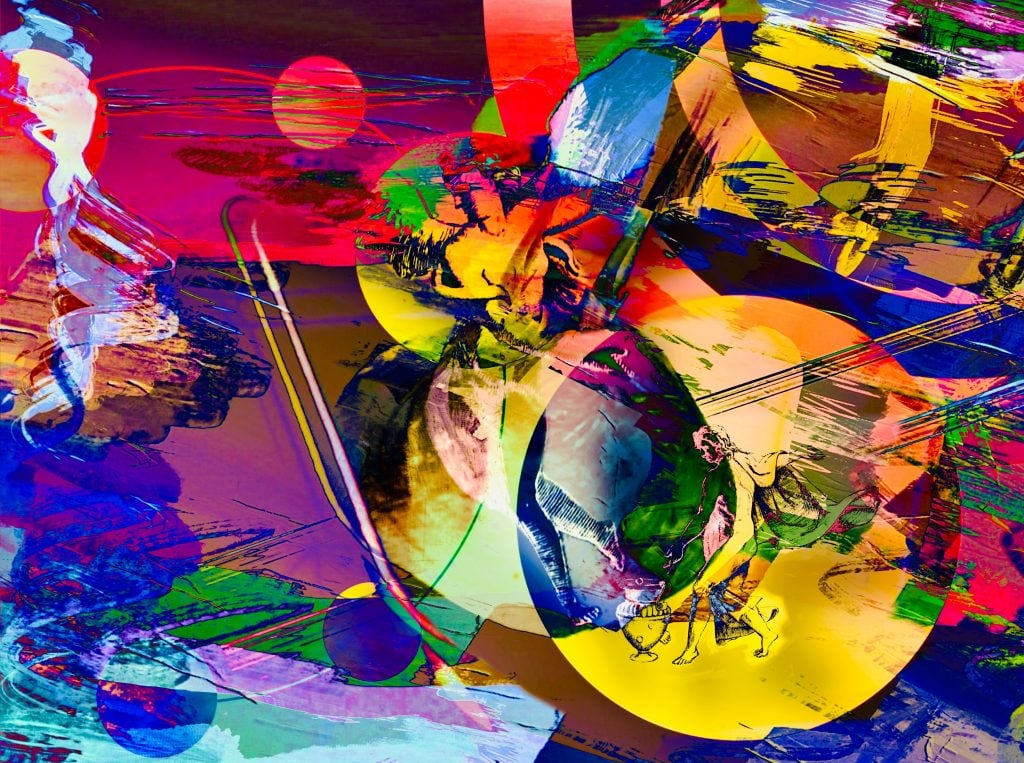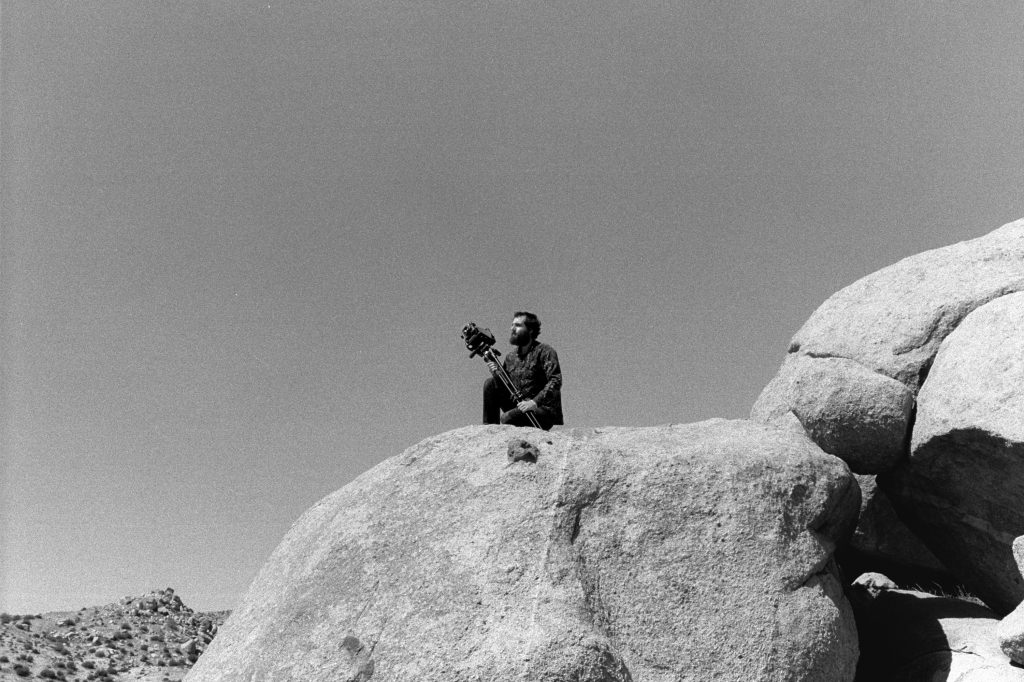Artnet News Pro
Theft and Fraud Are Rampant in the ‘Wild West’ of NFTs. Here’s How Artists and Buyers Can Protect Themselves
Platforms are cracking down on the issue but creators believe the NFT community itself is the best tool in their arsenal.

Platforms are cracking down on the issue but creators believe the NFT community itself is the best tool in their arsenal.

Vivienne Chow

When artist Giovanna Sun’s friends alerted her in mid-January that there was an Instagram account impersonating her profile, her reaction was swift and determined: she immediately warned her other friends and followers about the fake account, and mobilized them to report it to the social media platform. Two days later, the account was removed.
“When a lot of friends help you to report the fake account, Instagram will immediately suspend [it],” the New York-based artist, collector and tech entrepreneur, who has been successfully selling her NFT creations on OpenSea, told Artnet News.
Imposter accounts are becoming a serious problem for artists, whose work is being stolen, minted as NFTs and sold on platforms such as OpenSea, which is the largest NFT marketplace. Then, there is a second major risk facing the NFT community, specifically: fraud.
“I heard so many people’s stories on Clubhouse, people are collecting NFTs from artists while stealing their entire collections and ETH,” Sun said. Technology has allowed artists and creators to venture into the new frontier of NFTs, but it has also made various kinds of thefts possible. Bad actors may pretend to be nice and supportive—a typical attitude of the NFT community—and then find ways to access an artist or a collector’s crypto wallet and steal from there. Intellectual property infringement is another common scenario, which sees some accounts selling pieces that are essentially copycats or tweaks of an original, existing work.
Despite the impersonating Instagram account, Sun has not had her NFTs stolen, nor did she discover her work has been minted and sold on other platforms without her permission. And that should be considered lucky.
So many of her fellow artists and creators have had their art stolen in this way that there is even a dedicated Twitter account, @NFTtheft, to document and publicize creators’ ordeals with this, as well as other plagiarism and fraud incidents. Since it was created last September, it has reported thousands of incidents through more than 3,440 tweets.
sooo..
just found my art stolen on opensea.
please keep me the fuck away from crypto shit.I am not into nfts, I have never minted a piece in my life.
Remind me again why nfts are a good idea? pic.twitter.com/nQRepnbwvU
— Abel (@FIEND___) March 6, 2022
As the market continues to grow exponentially—Bloomberg reported in January that the NFT market had reached nearly $41 billion—the problem is only getting worse. There is no centralized data to reflect how serious such NFT fraud is, but in a tweet responding to a change of user policy, OpenSea revealed that more than 80 percent of the items created with the platform’s free minting tool were “plagiarized works, fake collections, and spam.”
“It’s absolutely rife with people pretending to be support in order to gain access to your wallet and in turn your NFTs,” said Josh Sandhu, a co-founder of Quantus Gallery, a newly launched NFT gallery and advisory service based in London. “There’s an abundance of phishing scams, and there’s some really smart people out there creating malicious contracts on the blockchain that will give them access to your wallet.”
Sandhu noted recently the gallery had an OpenSea clone, and a lot of people connected their wallets with this account. One of them lost some Bored Apes.
Crypto is still “very much the wild west,” he said. “The law hasn’t quite caught up. Even AML [anti-money laundering] checks that are standard in the art market aren’t a requirement with NFT art, and that’s because NFTs by and large aren’t regarded as works of art by regulators.”
For artists, working with a trustworthy gallery may help, Sandhu said, as the gallery will have the responsibility to ensure authentication, and protect the artist as well as the buyer. But whether as an artist or a buyer, it’s necessary to be extra cautious in the crypto realm. “The nature of allowing malicious sites to access your wallet isn’t the standard phishing attack either. It’s not a case of avoiding a link if you’ve already connected your wallet. You will need to disconnect access from the malicious smart contract or better yet, send your assets to a new wallet that hasn’t been compromised,” he advised.
NFT marketplaces are doing what they can to crack down on these issues.
“One of our operating principles is to support creators and their audiences by deterring plagiarism and IP infringement on OpenSea,” a spokesperson for the platform said in a statement to Artnet News. “It is against our policy to sell NFTs using plagiarized or stolen content, which we regularly enforce by delisting items, and in some instances, banning accounts. We are actively expanding our efforts across customer support, trust and safety, and site integrity so we can move faster to protect and empower our community and creators.”
Here we go again, again thanks to @DeviantArt Protect for the notice, i've even found even more stolen under the same "collection". DMCA sent and sat tight till I get some answer
Reason 549783943793 to don't trust at all N/F/Ts and the bros that love them pic.twitter.com/ez7AcctuKC
— Andrea Abad ~ Numen Skog – Commissions Closed (@numenskog) January 19, 2022
Meanwhile, platforms where creators publish and share their digital creations have vowed to up their games against NFT art theft. DeviantArt, for example, launched a beta version of DeviantArt Protect last July, an automated image recognition software that scans public blockchains and third-party marketplaces for potential infringement of NFT works. As of December last year, DeviantArt Protect has scanned more than 3.7 million NFT images per week, and issued more than 50,000 alerts related to potential NFT art theft. The platform is looking into expanding the service this year.
CXIP, a platform that helps artists to mint their NFTs securely while offering support for copyright registration in the U.S., is deploying a feature to automate the copyright application process for U.S. copyright registrations. “This is a new formality required in the U.S. in order for creators to have legal enforceability over their work,” Jeff Gluck, CEO and co-founder of CXIP, told Artnet News. “Some international jurisdictions have similar requirements and some form of reciprocity, others do not.”
Gluck, who also represents street artist Futura in an alleged art infringement lawsuit against the North Face, said minting on CXIP allows users to create their own personal smart contract, rather than a shared, centralized one that is commonly found minting on a marketplace. The personal smart contract, he said, offers “advanced security, on-chain provenance, and cross-market royalties,” whereas the alternative does not offer a similar level of protection and “may result in improper provenance.”

Smoke and Mirrors #60. Knight of Staffs minted on the CXIP smart contract. Courtesy of Justin Aversano.
Justin Aversano, an artist and co-founder of Quantum Art and SaveArtSpace who has minted NFTs on CXIP, said the platform is “a great example to protect yourself lawfully,” but since the realm of crypto is a wild west that transcends beyond the existing jurisdictions, even an advanced platform like CXIP has its limitations.
“Artists cannot claim their copyright for all jurisdictions unless they have a deep pocket,” the artist Giovanna Sun said, adding that even for platforms that have layers of gatekeepers, scammers won’t go away easily.
Artists and creators need to run an extra mile to protect themselves from plagiarism, fraud and theft in the NFT world, and one key aspect to this is to build a solid online presence, Sun said. Boosting social media presence isn’t just about self-marketing for NFT creators; it is a self-protection mechanism.
“Branding is important. Let collectors know you are the original artist and creator,” she said. But if one is social media-shy, make sure they are glued to different art communities, so that “other artists can help them to speak out.”
Sun was not alone in stressing that the NFT community itself is one of the best resources for artists seeking to protect their work. Aversano agreed. “The community that stands by the artists will protect the artist’s work,” he said.